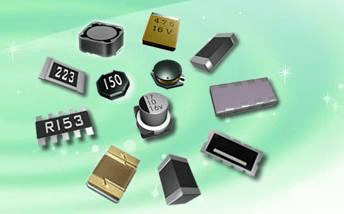What is the difference between SMT and SMD?
What is the difference between SMT and SMD
SMT stands for Surface Mount Technology, the entire technology of mounting and soldering electronic components, such as resistors, capacitors, transistors, integrated circuits, onto a printed circuit board or PCB. The components used are also referred to as surface-mount devices (SMD, surface-mount devices). It should be noted that SMT does not need to reserve corresponding through holes for component pins, and SMD is much smaller than through-hole insertion technology.
Features of SMT:
- Components have no leads or only short leads;
- The main body of the component and the solder joint are on the same side of the PCB;
Features of SMD:
- miniaturization;
- No lead (flat or short lead);
- Suitable for surface assembly on PCB;
In the early stages, SMD were soldered manually by hand. Then the first batch of pick and place machines could only handle a few simple components. The more complex and smaller components still needed to be placed manually. Not long before the introduction of surface mount components over 20 years ago, a new era was born. From simple resistors to complex ICs, almost every through hole component now has an SMT equivalent.
The actual process of SMT
- Firstly, a PCB stencil is aligned on the surface of the boards and solder paste is applied using a squeegee to ensure the pads are coated with a uniform and controlled amount of solder paste.
- Secondly, via a pick and place machine or hand placement, the components are mounted onto the boards in their respective locations. The wet solder paste will act as a temporary adhesive but it is still important to ensure that the boards are moved gently to prevent misalignment.
- Thirdly, the boards are passed through a reflow oven which subjects the boards to infrared radiation, melting the solder paste and forming solder joints.Then the boards are passed through an AOI machine, or Automatic Optic Inspection machine which runs a number of quality checks on the boards visually, such as component alignment and checking for solder bridges. The boards then proceed to further testing.
In the 1980s, SMT production technology became increasingly more refined and as a result, is widely used in mass production. As costs were reduced and technical performance enhanced, more advanced but economical equipment became available.
Types of SMD
Passive components
- resistance
- capacitance
- inductance
- Composite device
Discrete components
- integrated circuit
- Active device
Electromechanical devices
- Switch/relay
- Connector
- Micro-motor
Advantages of SMT
- Reduce PCB area;
- Reduced weight
- Installation is easy to automate;
- Reduce parasitic capacitance and parasitic inductance;
- Improve product quality and reliability;
Seeed provides a full turnkey service, including parts procurement and assembly. Whether you are prototyping or scaling up to mass production, Seeed Fusion is the one-stop destination for smooth and hassle free PCB Assembly.
We offer various sponsorships and value-added services to provide an unrivaled PCBA experience aimed at minimizing setbacks and maximizing yield and efficiency while supporting developers. We include PCB DFM and PCBA DFA design checks, and functional testing for one piece free with every PCBA order, and offer free prototyping for business users and additional sponsorships for Raspberry Pi CM4, Raspberry Pi Pico, and Wio RP2040 designs.
Get an instant online quotation now, we look forward to working with you.

